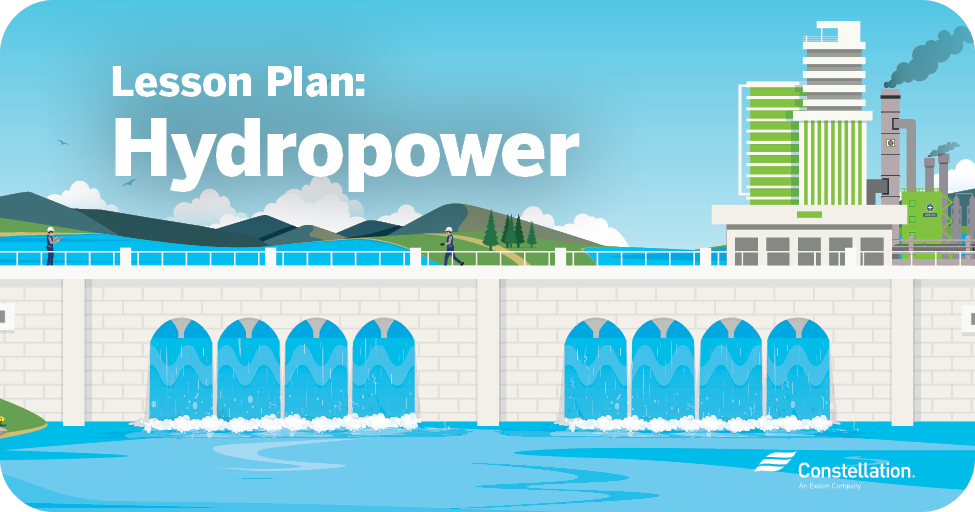Water can be a very powerful, clean source of energy. Water has been used for centuries to carry cargo, grind grain, and you guessed it, generate electricity, otherwise known as hydropower! Dare we say this lesson might be dam fun? This activity set will introduce how we can use water to do work for us and how electricity can be generated. The culminating activity will have students rolling on the river, as they build their own water wheel.
Looking for more home energy activities? We’re pleased to work with The National Energy Education Development Project (NEED), to deliver these fun activities. Be sure to check out their library of resources, and their specialized collection of energy-themed distance/at-home learning activities. All activities are totally free for use at home or school, and accessible by visiting their website, www.NEED.org.
- Background reading: Elementary Energy Infobook, Hydropower
- Interactive Fill in the Blank Worksheet
- Background reading: Intermediate Energy Infobook, Hydropower
- Interactive Crossword
Moving Water Can Do Work will really help to get the wheels turning as students build their own water wheel using craft and office supplies. Students will construct a basic water wheel using a cup, pencil, popsicle sticks or wooden spoons, and a craft ball. Students will then test their wheel by pouring water onto it from another cup or the faucet. The water will provide the force to have the wheel do work and lift weight in the form of paper clips. Add clips until you can’t lift anymore! Don’t have these items? You can use a ball of clay, play dough, or even masking tape for your wheel in the center. Is your wheel not turning? Check to make sure your wheel can turn freely inside your cup, and shorten the blades as needed. Also, try pouring the water straight down onto the blades and not on the wheel itself. For an added bonus, re-design your model to lift even more paper clips!
Join our friends from NEED as they show you in the video below how to build your own water wheel to do work!
Additional support links:
- https://switchon.org/ (Free signup for all video clips)
- https://www.eia.gov/energyexplained/
- https://www.eia.gov/kids/
Fall Lesson Plans:
- Lesson Plan 1: Biomass
- Lesson Plan 3: Water Conservation
- Lesson Plan 4: Climate Change and Energy Conservation
- Lesson Plan 5: Heating and Cooling
Spring Lesson Plans:
- Lesson Plan 1: Energy Basics and Energy Sources
- Lesson Plan 2: Electricity and Electricity Generation
- Lesson Plan 3: Conservation at Home
- Lesson Plan 4: Wind and Natural Gas
- Lesson Plan 5: Solar Energy
- Lesson Plan 6: Understanding Your Energy Bill
- Lesson Plan 7: Measuring Your Electricity Consumption
- Lesson Plan 8: Lighting and Appliances
